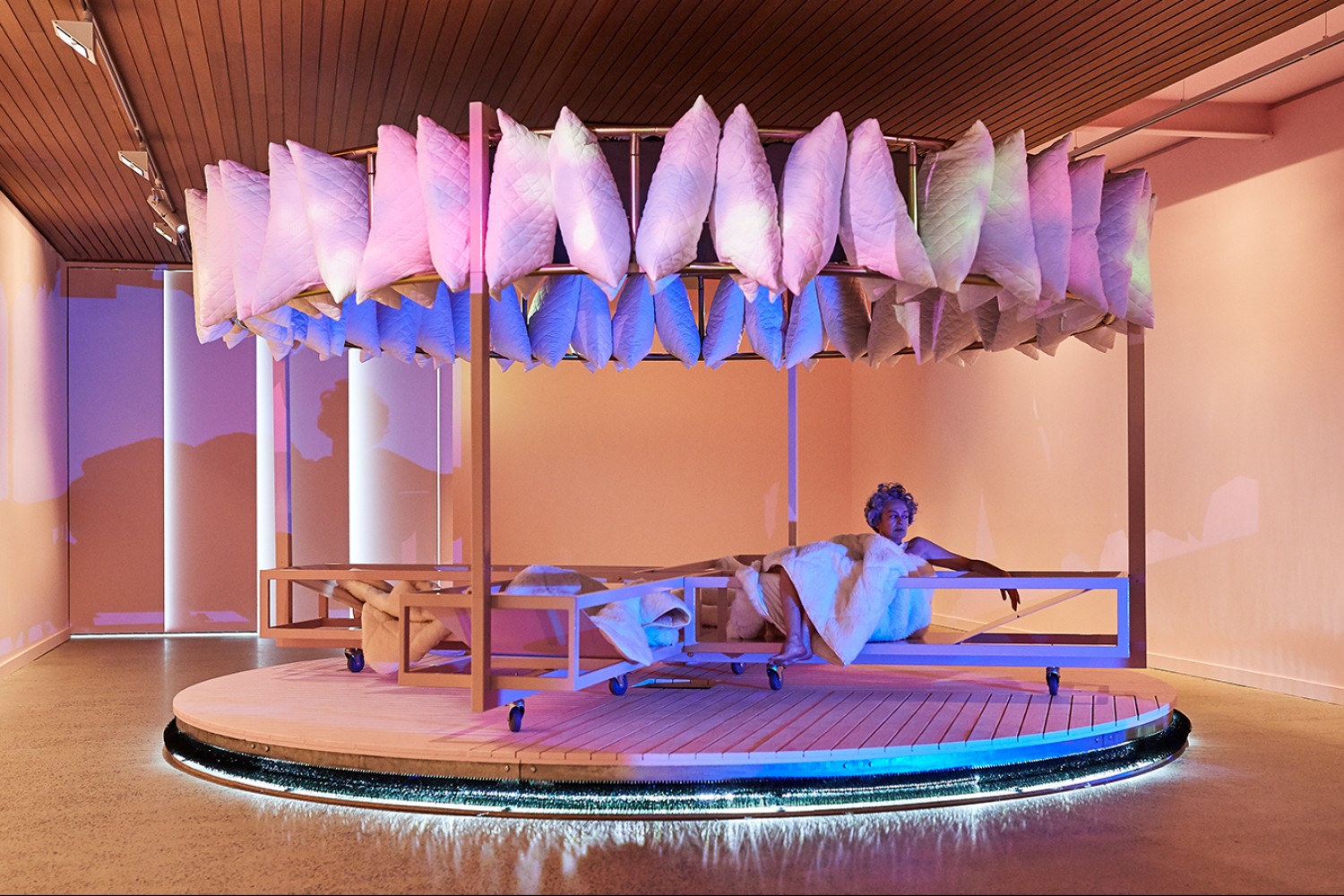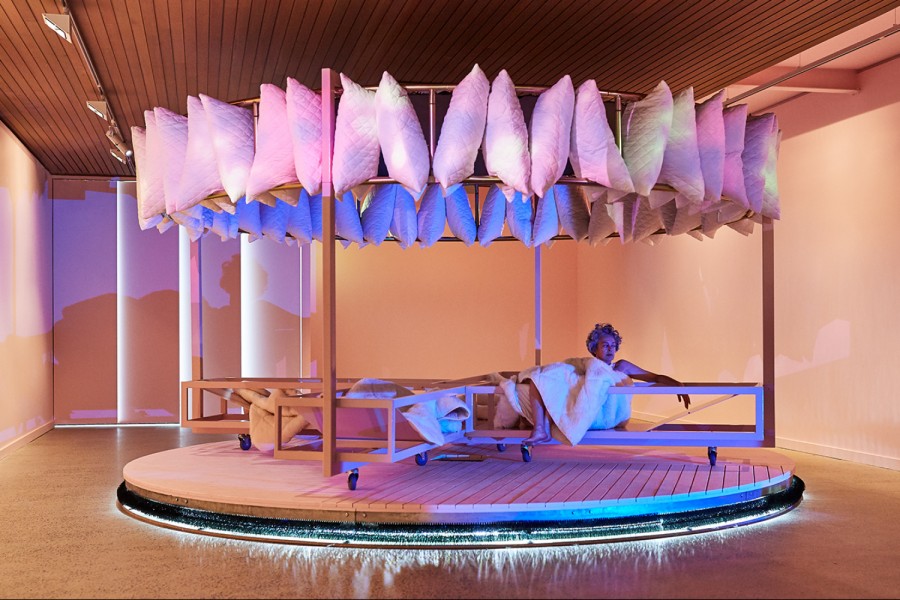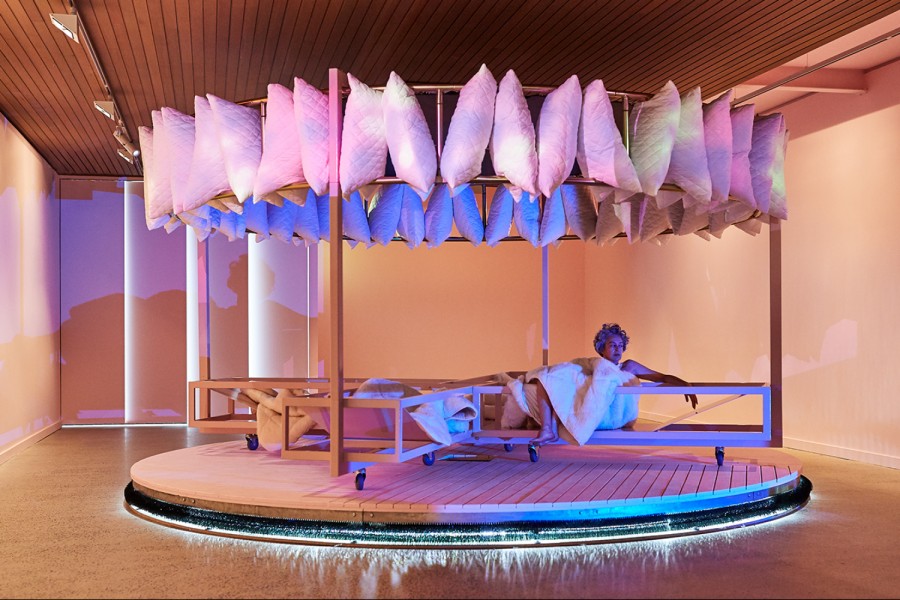Dormitories, camps, airplanes, hospitals, the late hours of a party and bedrooms are all spaces in which we share the solitary experience of sleep; sometimes with people we know, sometimes with strangers. The idea of sleep as a communal activity, rather than a private daily obligation, is what underscores Matthew Bird’s interactive installation Dormitorium.
While the concept of sleep propels Bird’s installation, it’s our awakened sensory perceptions that sustain and complicate the experience of Dormitorium. Inside Melbourne’s McClelland Sculpture Park + Gallery, Bird draws on his background in architecture to construct an exhibition centred upon what he (somewhat jokingly) calls “a quad-cot”.
“There are four interlocking cots or structures that sit on a motorised turntable that is housed under a gold trampoline,” he explains. “It’s a number of concepts colliding with each other, but [for the gallery visitor] the end experience is laying in this carousel, graviton-like experience, and rotating very slowly with moving light and sound transforming the experience.”
With a penchant for sourcing installation material from Bunnings, Bird calls his material process the “DIY baroque effect” used to create “an ironic lush space”.
This space is fuelled by links to the body (each cot is roughly the same proportion as a coffin), personal memories and recollections (the gold trampoline references Bird’s own childhood escapades) and the everyday (the trampoline is filled with sheepskin, which is of course a literal reference to counting sheep).
For Bird, the work primarily “looks at communal sleep space and how we occupy sleep space with either strangers or partners”. Bird says that his aim is “to distort and critique the way we think about sleep, which is a really huge topic. A third of us don’t sleep well and the work is trying to deal with this specifically, like how that weird person in the airplane seat next to you can be comfortably sleeping on your shoulder. That’s my interest, the social interaction.”
Intense research pervades the interdisciplinary nature of Dormitorium, prompting Bird to collaborate with sleep scientists at Monash University, as well as designers, architects and performance artists.
The act of shared sleep is less about happenstance and more about the complex weave of neuroscience, spatial design, aesthetics, architecture, light, sound and the social paradox that sleep is both solitary and communal, biological and aesthetic.
Dormitorium suspends our accepted notions of the eight-hour sleep day, viewing this as a Western development that has replaced the prehistoric community ritual of sleeping together at the command of the sun. Instead, Dormitorium considers, distorts, manipulates and critiques our preconceived notions of what happens when we close our eyes together.


